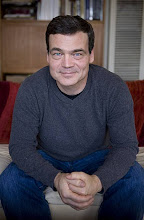The Japan Karate Association of San Francisco will be moving to a new location starting in May. We will be having classes twice a week at the Genesis DanceSport Academy, 404 Clement Street, 2nd floor, between 5th and 6th Avenues in San Francisco. The fee schedule will change, too: $100 per month, or $50 per month for beginners. Cash or check only.
All ranks above beginner are encouraged to train in all classes, until further notice.
Class schedule:
Thursday:
7:30 to 8:30 PM: Intermediate
8:30 to 9:30 PM: Advanced
Saturday:
11:00 AM to 12:00 Noon: Beginners
12:00 Noon to 1:00 PM: Combination
Please note that this website is updated infrequently. Consult our main website or Facebook page:
http://jkasanfrancisco.com
http://www.facebook.com/pages/JKA-of-San-Francisco/274168072627736
The JKA of San Francisco is a traditional Japanese Shotokan karate-do dojo, affiliated with the Japan Karate Association World Federation and JKA Shotokan Karate-do International, led by Mr. Masataka Mori, 9th dan, New York. (There are other dojo affiliated with or descended from the JKA in San Francisco and the Bay Area; the JKA of San Francisco makes no claim to superior position within the JKA system.)
Chief Instructor T.J. Stiles, 5th dan, holds the following licenses from JKA headquarters in Japan: Class B Instructor, Class B Tournament Judge, Class C Rank Examiner. He is also a graduate of the JKA Shotokan Karate-do International's intermediate and advanced instructor-training courses, taught by Mori Sensei. It exists to teach karate-do according to the technical standards of the Japan Karate Association, and within its institutional parameters, and also to further the spirit of traditional karate-do taught by Mori Sensei.
All ranks above beginner are encouraged to train in all classes, until further notice.
Class schedule:
Thursday:
7:30 to 8:30 PM: Intermediate
8:30 to 9:30 PM: Advanced
Saturday:
11:00 AM to 12:00 Noon: Beginners
12:00 Noon to 1:00 PM: Combination
Please note that this website is updated infrequently. Consult our main website or Facebook page:
http://jkasanfrancisco.com
http://www.facebook.com/pages/JKA-of-San-Francisco/274168072627736
The JKA of San Francisco is a traditional Japanese Shotokan karate-do dojo, affiliated with the Japan Karate Association World Federation and JKA Shotokan Karate-do International, led by Mr. Masataka Mori, 9th dan, New York. (There are other dojo affiliated with or descended from the JKA in San Francisco and the Bay Area; the JKA of San Francisco makes no claim to superior position within the JKA system.)
Chief Instructor T.J. Stiles, 5th dan, holds the following licenses from JKA headquarters in Japan: Class B Instructor, Class B Tournament Judge, Class C Rank Examiner. He is also a graduate of the JKA Shotokan Karate-do International's intermediate and advanced instructor-training courses, taught by Mori Sensei. It exists to teach karate-do according to the technical standards of the Japan Karate Association, and within its institutional parameters, and also to further the spirit of traditional karate-do taught by Mori Sensei.







